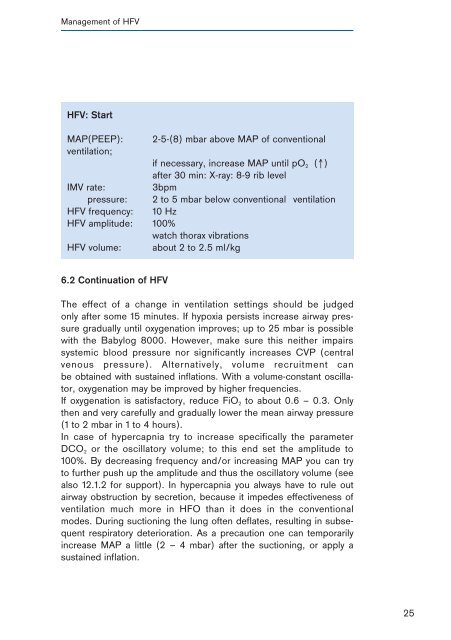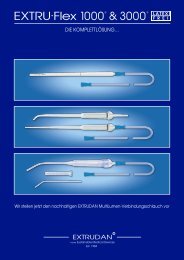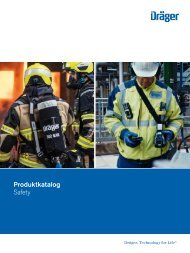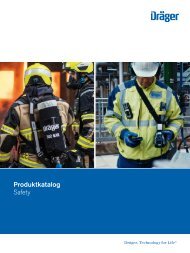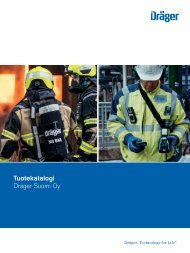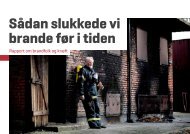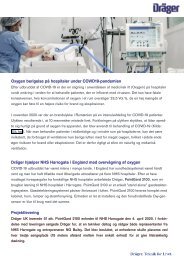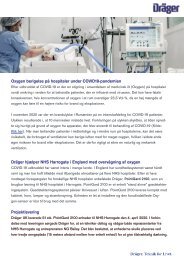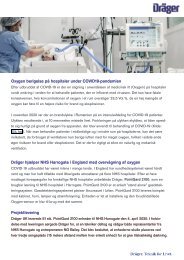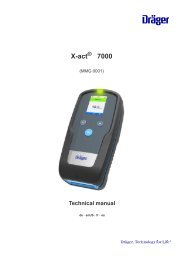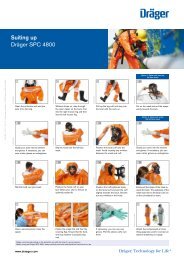High-Frequency Ventilation- Basics and Practical Applications
Create successful ePaper yourself
Turn your PDF publications into a flip-book with our unique Google optimized e-Paper software.
Management of HFV<br />
HFV: Start<br />
MAP(PEEP): 2-5-(8) mbar above MAP of conventional<br />
ventilation;<br />
if necessary, increase MAP until pO 2 (↑)<br />
after 30 min: X-ray: 8-9 rib level<br />
IMV rate: 3bpm<br />
pressure: 2 to 5 mbar below conventional ventilation<br />
HFV frequency: 10 Hz<br />
HFV amplitude: 100%<br />
watch thorax vibrations<br />
HFV volume: about 2 to 2.5 ml/kg<br />
6.2 Continuation of HFV<br />
The effect of a change in ventilation settings should be judged<br />
only after some 15 minutes. If hypoxia persists increase airway pressure<br />
gradually until oxygenation improves; up to 25 mbar is possible<br />
with the Babylog 8000. However, make sure this neither impairs<br />
systemic blood pressure nor significantly increases CVP (central<br />
venous pressure). Alternatively, volume recruitment can<br />
be obtained with sustained inflations. With a volume-constant oscilla -<br />
tor, oxygenation may be improved by higher frequencies.<br />
If oxygenation is satisfactory, reduce FiO 2 to about 0.6 – 0.3. Only<br />
then <strong>and</strong> very carefully <strong>and</strong> gradually lower the mean airway pressure<br />
(1 to 2 mbar in 1 to 4 hours).<br />
In case of hypercapnia try to increase specifically the parameter<br />
DCO 2 or the oscillatory volume; to this end set the amplitude to<br />
100%. By decreasing frequency <strong>and</strong>/or increasing MAP you can try<br />
to further push up the amplitude <strong>and</strong> thus the oscillatory volume (see<br />
also 12.1.2 for support). In hypercapnia you always have to rule out<br />
airway obstruction by secretion, because it impedes effectiveness of<br />
ventilation much more in HFO than it does in the conventional<br />
modes. During suctioning the lung often deflates, resulting in subsequent<br />
respiratory deterioration. As a precaution one can temporarily<br />
increase MAP a little (2 – 4 mbar) after the suctioning, or apply a<br />
sustained inflation.<br />
25


